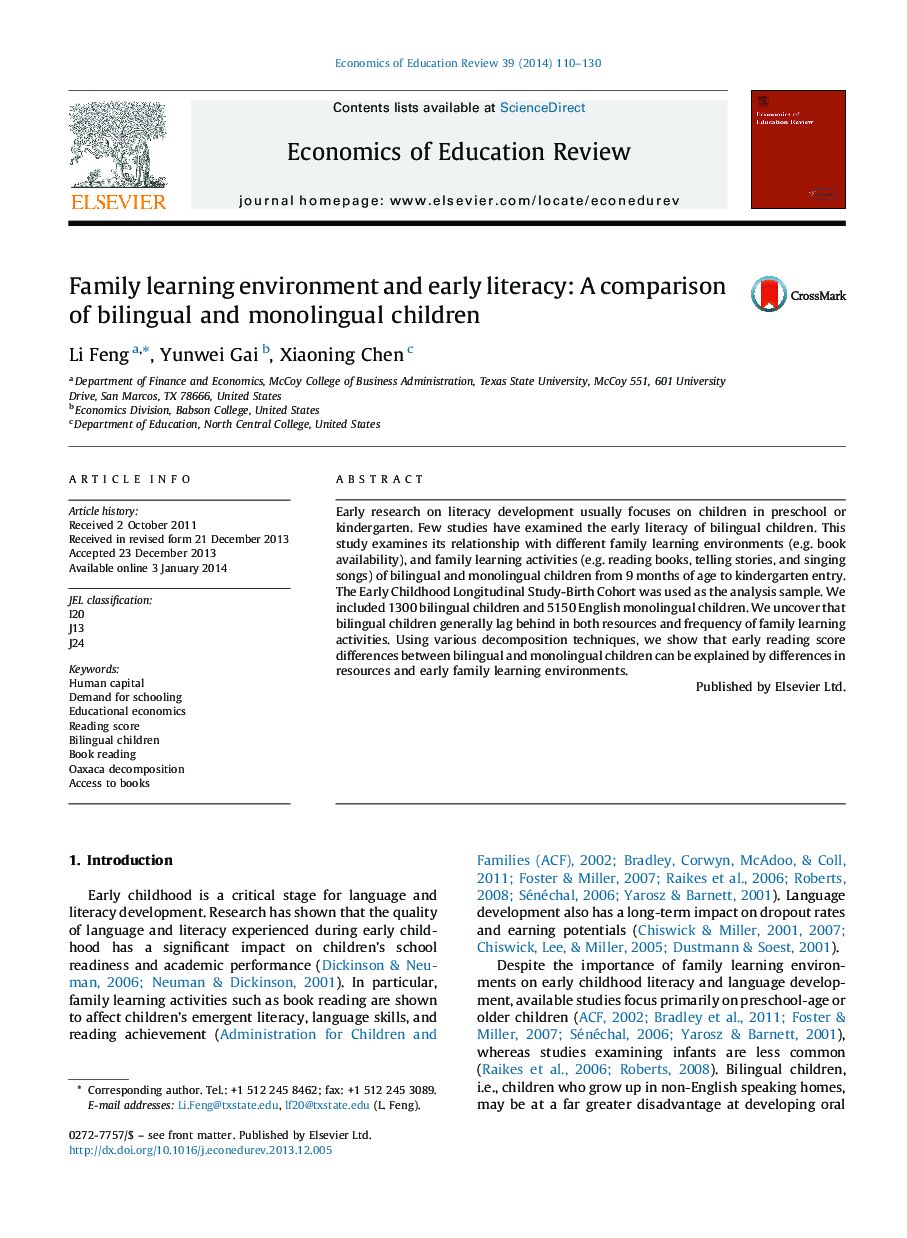| Article ID | Journal | Published Year | Pages | File Type |
|---|---|---|---|---|
| 354346 | Economics of Education Review | 2014 | 21 Pages |
•We investigate the relationship between book reading, singing songs, telling stories from 9-month to 4-year and reading test scores in preschool and kindergarten waves.•We examine two distinct groups—English monolingual children and bilingual children.•Bilingual children usually have fewer books at home, are not read to as frequently, and have lower test scores.•Oaxaca decomposition results show that differences in literacy and language test score can be explained by differential investment in early home learning environment.
Early research on literacy development usually focuses on children in preschool or kindergarten. Few studies have examined the early literacy of bilingual children. This study examines its relationship with different family learning environments (e.g. book availability), and family learning activities (e.g. reading books, telling stories, and singing songs) of bilingual and monolingual children from 9 months of age to kindergarten entry. The Early Childhood Longitudinal Study-Birth Cohort was used as the analysis sample. We included 1300 bilingual children and 5150 English monolingual children. We uncover that bilingual children generally lag behind in both resources and frequency of family learning activities. Using various decomposition techniques, we show that early reading score differences between bilingual and monolingual children can be explained by differences in resources and early family learning environments.
